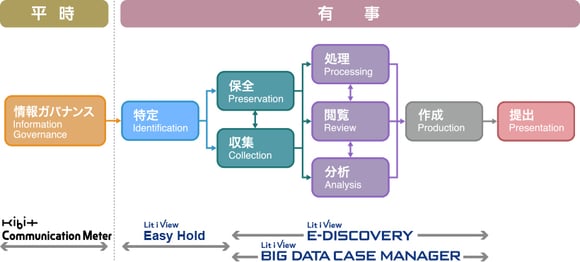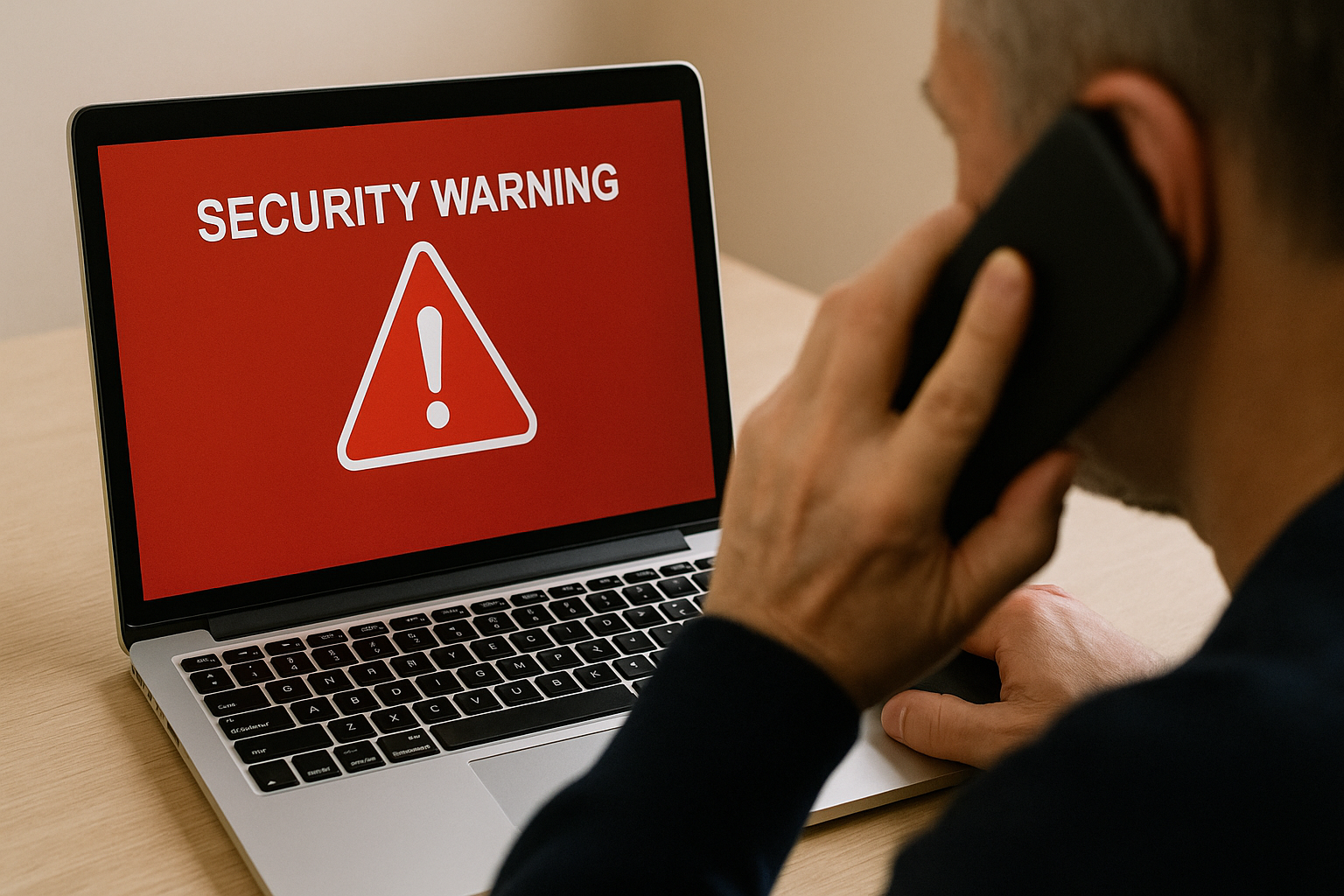
If a company is unable to take the initiative in the discovery process, it will not be able to control costs. As we have discussed, the preferred approach for Japanese companies is to contract directly with a discovery vendor.
We have prepared a brief summary of the questions you should always ask during vendor selection and negotiation, ideal responses to those questions, examples of responses you should be aware of, and the reasons for those responses.
(1) What is the scope of discovery coverage and where does it begin and end?
| Ideal answers |
Answer with caution |
| The company handles all processes in-house. 1. |
1. we are handling all the processes (by re-consignment). 2.
2. only part of the discovery process is handled. |
The e-discovery flow is divided into the processes of information governance, identification, preservation/collection, processing/viewing/analysis, creation, and submission, as specified in the EDRM model. When selecting a vendor, it is necessary to confirm from where to where the vendor can perform these processes.

Most major vendors will tell you that they handle all of these processes. However, this should not be taken for granted. You should also ask about the possibility of subcontracting to subcontractors. When checking the "Discovery Coverage," it is also a good idea to confirm that the company does not subcontract or outsource to subcontractors. In addition, it is recommended to include a sentence in the contract that "written consent from the ordering party will always be obtained before re-consignment to an outside vendor".
Vendors who answered "2. Only a part of the work" in the sample answer should be noted that even "a part of the work" is outsourced to other companies, or they only use general-purpose tools. Changing vendors for different processes is prone to mistakes and risks of information leakage, so you should choose a "comprehensive discovery support vendor" that can consistently handle all tasks.
Where do you perform the process work and review work?
| Ideal answer |
Answer to be noted |
| Work will be performed in Japan. |
Work will be performed in the U.S. or overseas. |
If outsourcing to an American vendor, the question is where to conduct the process and review work. In many cases, the work will be done in the U.S., but this will require more translation costs and time than necessary. If the process and review is done in Japan, there is no need for such costs and time.
Also, you should be careful in terms of data management. When you take the data overseas, it is the same as giving up control of the data. No matter how many NDAs you have signed with contract vendors, if the data is re-consigned, you will never know who is viewing the data, and this is a risk for the company.
3) Japanese-language capability, proven track record and extensive experience in discovery for Japanese companies?
| Ideal Answer |
Answer with caution |
| The firm is fluent in Japanese and has handled at least 100 discovery matters for Japanese companies to date. |
I am fluent in Japanese, but have little experience with Japanese companies. |
As discussed in detail in Introduction to Discovery (6/7): The Key to Controlling Costs is in the Estimate Check (Part 2), not supporting Japanese is inefficient because it causes garbled data, reduces the accuracy of the process, and incurs unnecessary translation costs and time. It is not efficient.
Furthermore, it is important to note that even if a company is "Japanese-enabled," the discovery process may not be.
For example, if the company has an office in Japan, or if the office is in the U.S. but the staff understands Japanese, the response will be "Yes, we can handle that. However, what is important is not whether or not they can speak Japanese, but whether or not they have a strong track record and a wealth of experience in discovery for Japanese companies.
4) Do you use Predictive Coding, which has a high track record in Japanese and other Asian languages?
| Ideal Answer |
Answer with caution |
| Yes, we use it (can provide demonstrations and numerical data). |
Not in use. Or, it is used but cannot be demonstrated. |
It is no exaggeration to say that "discovery" = "review," and review costs account for such a large proportion of total discovery costs that it is important to make this process as efficient as possible in order to successfully control costs. This is where Predictive Coding comes into play.
Predictive coding is the use of computer processing to perform pre-reviews with near-human precision. By introducing this technology, the review process, which previously relied entirely on the human eye, can be greatly reduced in both cost and time.
Predictive coding is becoming so essential to review efficiency that there is no reason not to use it. Vendors who nevertheless do not use it either do not have the technology or are deliberately choosing to perform "human eye" reviews to increase their profit margins, a cost-incurring method. These unknowing vendors should be eliminated from the list of options.
The percentage of Responsive (Relevant) documents (=Relevant documents) covered = Recall Rate is called Recall Rate (Extraction Rate). The figure above shows the Recall Rate plotted against the number of documents sorted from highest to lowest scores. For example, reviewing 30% of the documents with the highest score means that 75% of Responsive documents can be reviewed.
The Precision (conformance rate) refers to the percentage of documents that are actually Relevant out of those that are judged Relevant; the more documents that are judged Not Relevant despite being Relevant = more misjudgments, the smaller the value becomes. In the above figure, the Precision of the top few percent of documents is low, indicating that misjudgment has occurred in high-scoring documents.
The most effective way to get an idea of the accuracy of Predictive Coding is through demonstration.
With about one computer's worth of sample data, you can demonstrate and check the accuracy of your work in a single day. The vendor's "tuning" ability is also important. Demonstrations inevitably yield inconsistent results, depending on the sample data collection method and other factors. Under such conditions, it is important to determine how the vendor can communicate with the company's litigation staff and how they can handle the work to a high degree of accuracy.
Another key factor in determining a vendor's responsiveness is whether they can immediately provide recall rates, precision rates, etc., prior to conducting a demonstration. If the supporting vendor or vendor's personnel do not know and understand those numerical supporting data, it is impossible to create a highly accurate estimate.
5) At what stage of the translation process?
| Ideal answer |
Answer with caution |
| Translate only those documents that will be submitted as evidence after the review is completed. |
Translate before the process for all data collected. |
It is only a waste of both cost and time to translate documents at a stage where you have not narrowed down the documents to be used as evidence. While some vendors prefer to translate all of the collected materials before the process work, the most ideal approach is to translate only the evidence to be submitted.
Even if this is not possible, it is a good idea to be sure when the translation work will be done. If a vendor says they will translate after review, you can trust them.
6) At what stage is OCR done?
| Ideal answer |
Answer that should be noted |
| OCR is not performed (*) |
OCR is performed on all collected data before processing. |
(*PDF image files, paper documents, etc. may be subject to OCR)
Tiffing documents and applying OCR prevents garbled characters in the data, which is why "Japanese-language vendors" in all but name like to use this method. However, OCR is limited in its accuracy, so there is no way to avoid concerns about extracting reliable evidence, and vendors with high-precision Japanese analysis technology can correctly analyze data without OCR.
⑦ How fast is the review process?
| Ideal response |
Answers to be noted |
| Show clear figures orally or in documents. |
Do not give clear figures because it depends on the nature of the case, or because Japanese is too difficult to understand. |
Many vendors may not be able to answer clearly when asked about the review speed. Be wary if they give vague answers as to why, such as "I don't know how long it will take because Japanese is complicated," or "I don't know because it depends on the documentation.
This is because they often want to take as much time as possible and incur extra costs. Since it is directly related to the cost of review, which accounts for a large portion of sales for them, if you give them a clear figure, they will know the cost required, and it will be difficult to charge a lot of costs over a long period of time, so they may really want to keep the matter as vague as possible.
Even if a vendor gives you a decent figure, check with them about the number of files processed per hour. Vendors who have accumulated expertise in conducting efficient reviews may be able to review 60 files per hour, even for complex documents. In some cases, they have been able to increase the number of files to 120.
8) Where (in what country) is the server hosting the data provided to the vendor for discovery located?
| Ideal Answer |
Answer with caution |
| Located in a data center in Japan. |
Locate outside of Japan, such as in the U.S. |
American lawyers and law firms frequently want data. At various stages of the process, they will ask you to send the data to the U.S. You do not have to comply with this request. If the data can be stored in a data center in Japan, it is fine to work there. (As mentioned above, sending data to a location over which you have no control increases the risk of information leaks.)
When we asked our lawyers the reason for this, they said that by placing the data in the U.S., it makes a better impression on the courts and the DOJ. The goal is to give the impression that by turning over the documentary evidence (and other data as well), the Japanese company has given up the idea and is cooperating with the investigation.
This is not quite true. The fact that the data is under the jurisdiction of the court and the DOJ creates a situation in which "investigations can be conducted at any time.
However, what about the case of a legal dispute between an American and a European company, where the EU's Data Protection Directive prohibits the transfer of data to a third country that does not provide an adequate level of data protection? Since the U.S. does not have a comprehensive law for the protection of personal data, the movement of data is basically prohibited. If a U.S. lawyer asks for it, the lawyer himself may be punished. This is often brought to our attention at seminars, so it is common knowledge for U.S. attorneys.
Nevertheless, if the reason is that "bringing data to the U.S. will be advantageous in a lawsuit," then European companies are always in a disadvantageous position. This does not make sense in any way.
Also, in cross-border cases, the same data may be used as evidence in multiple lawsuits. It is easy to imagine that one file is used for both cases A and B.
Regardless of the scope of the litigation, a tremendous amount of data is now collected at each discovery event. It is wasteful, both in terms of cost and time, to conduct discovery on the same documents for each case. That is why "cross-matter management," in which data is managed in a data center and retrieved on a case-by-case basis, is so efficient.
Sending data to the U.S. or hosting data on a server in the U.S. is the complete opposite of "cross-matter management" and goes against the flow of the times.
Previous:Introduction to Discovery (6/7): The Key to Controlling Costs is in Checking Estimates (Part 2)
